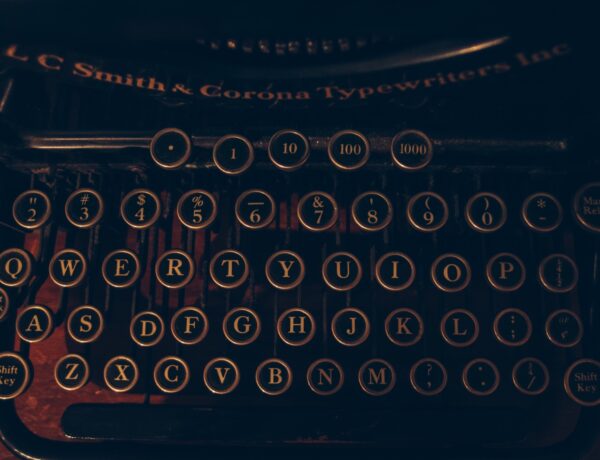In the digital age, the life of a writer is like navigating a sea filled with islands of distractions. Constant connectivity, the buzz of social media notifications, and the endless stream of emails and messages can make focusing on writing feel like an uphill battle. This constant barrage of information not only hampers productivity but also often stifles creativity, leaving one feeling more drained than inspired.
In the midst of this digital chaos, establishing a distraction-free routine becomes not just beneficial, but essential. It’s about creating an oasis of calm in a desert of digital noise, a space where creativity can flourish without the interruptions of the modern world. This isn’t just about shutting off from the world; it’s about strategically organizing the writing process to make the most of both the digital tools and the uninterrupted time.
The following strategies are all about crafting that perfect blend. It’s a mix of old-school discipline and modern technology, tailored to keep the digital world at bay while harnessing its power when needed. From identifying personal distractions to setting up a conducive writing environment, these practical steps are designed to help writers find their focus and maintain a productive rhythm in their writing endeavors.
Identifying and Overcoming Digital Distractions
The first step in carving out a distraction-free writing routine is to identify the digital culprits. Common distractions like social media, emails, and instant messaging have a sneaky way of pulling writers away from their work. One minute, it’s a quick check of a notification, and the next, it’s an hour lost in the depths of the internet.
Understanding personal distractions is crucial. Everyone has their own digital Achilles’ heel – for some, it’s the constant pings of social media updates, for others, it’s the endless cycle of emails. Recognizing these can be eye-opening, revealing just how much they intrude on productivity and creative thinking.
Once these distractions are identified, the next step is to find ways to overcome them. Technology, often the source of distraction, can also be the solution. Website blockers and focus apps are handy tools in this fight against digital diversions. These tools can block access to distracting sites and apps for set periods, helping writers maintain focus during writing sessions.
Another effective strategy is to set specific times for checking emails and social media. This approach not only limits distractions but also helps in structuring the day more efficiently, allowing for dedicated writing time. It’s about regaining control over the digital world, ensuring that it aids the writing process instead of hindering it.
Creating a Distraction-Free Writing Environment
Beyond the digital realm, the physical space where one writes plays a significant role in fostering concentration. A writing environment that is conducive to focused work can make a world of difference. It’s about creating a space that signals the brain, “It’s time to write.”
Setting up a dedicated writing space is a good start. This doesn’t necessarily require an elaborate setup; even a small corner, consistently used for writing, can become a sanctuary of productivity. The key is to make this space as free from digital interruptions as possible. This might mean having a computer that’s solely for writing, devoid of games or social media bookmarks, or it could be as simple as keeping the phone in another room.
Embracing digital minimalism in this space is also beneficial. This concept involves reducing digital clutter, like unnecessary apps and notifications, which can be particularly distracting. It’s about streamlining the digital environment to include only what’s essential for writing and research.
Routines and rituals also play a crucial role in reinforcing a distraction-free mindset. Starting each writing session with a specific ritual, like brewing a cup of coffee or a few minutes of meditation, can signal to the mind that it’s time to focus. Consistency in this routine helps in forming a habit, gradually making it easier to slip into the writing mode without succumbing to distractions.
In essence, creating a physical environment that supports focused writing, combined with a routine that fosters a disciplined approach, lays the groundwork for a productive and fulfilling writing experience, free from the clutches of digital distractions.
Balancing Connectivity with Productivity
In today’s interconnected world, completely cutting off digital connectivity isn’t just impractical; it’s counterproductive. The key is to find a balance – harnessing the benefits of the digital world while ensuring it doesn’t impede focused writing time. This balance is crucial for writers who need to research, network, and stay updated, all while dedicating substantial time to the actual act of writing.
One practical approach is to schedule specific times for activities like checking emails, conducting research, and engaging on social media. This could mean setting aside certain hours of the day for these tasks, separate from writing time. For example, dedicating the first hour of the morning to emails and social media, and then moving into a solid block of uninterrupted writing. This method ensures staying connected and responsive, while also safeguarding precious writing time from the constant intrusion of digital notifications.
Regular breaks and offline time are also vital in maintaining a healthy balance between connectivity and productivity. These breaks serve as a mental reset, giving the mind a chance to rest and rejuvenate. This downtime is not just beneficial for mental well-being; it’s also a time when creativity often flourishes. Stepping away from the screen for a walk outside, a short meditation session, or just a quiet moment with a cup of tea can do wonders for refreshing the mind and sparking new ideas.
Incorporating these strategies into a daily routine helps in cultivating a productive writing practice that leverages the advantages of digital tools without letting them become a hindrance. It’s about making digital connectivity work for you, not against you, in the pursuit of effective and creative writing.
Final Thoughts
Establishing a distraction-free writing routine in the digital age is an art that requires a blend of discipline, strategy, and self-awareness. The key strategies include identifying and overcoming digital distractions through tools and designated times for digital activities, creating a physical writing environment that encourages focus, and finding a balance between staying connected and being productive.
It’s important for writers to remember that there is no one-size-fits-all solution. The digital landscape is ever-changing, and so are personal circumstances and workflows. Experimenting with different techniques and approaches is crucial in finding what uniquely works for each individual. It might be a trial-and-error process, but finding that sweet spot where productivity harmonizes with digital connectivity can significantly enhance both the quality and enjoyment of the writing process.
In a world where digital distractions are the norm, crafting a space for focused creativity is both a challenge and an opportunity. By adopting these strategies and adapting them to personal needs and styles, writers can not only survive but thrive in the digital age, turning potential distractions into tools for effective and enjoyable writing.




No Comments